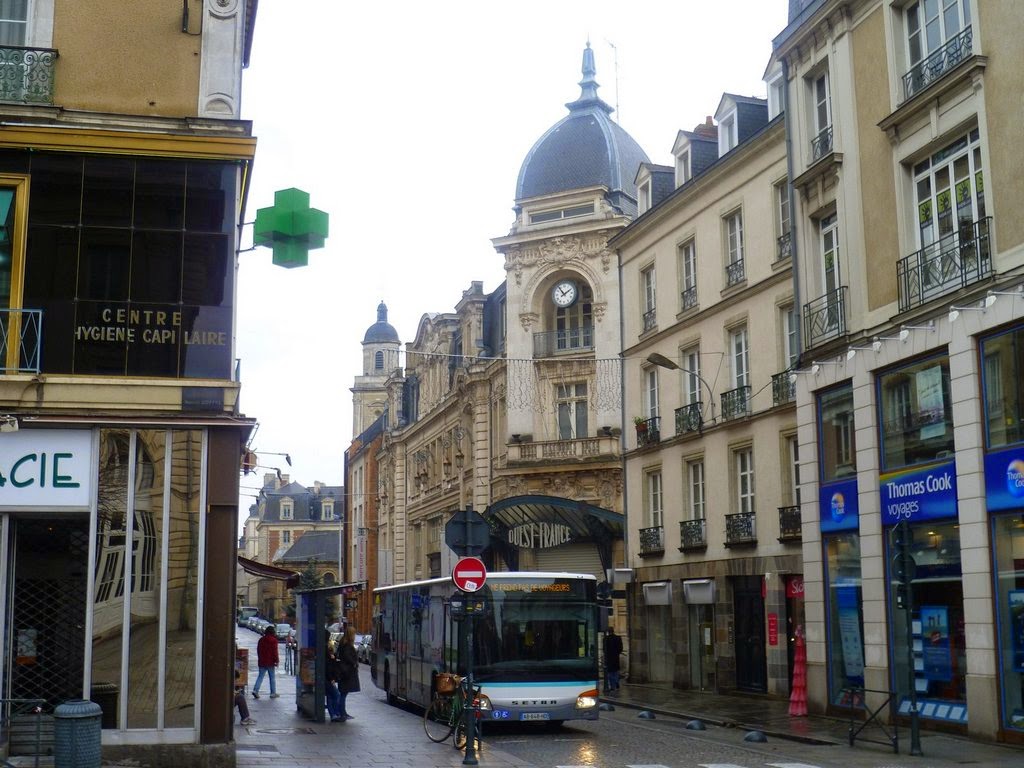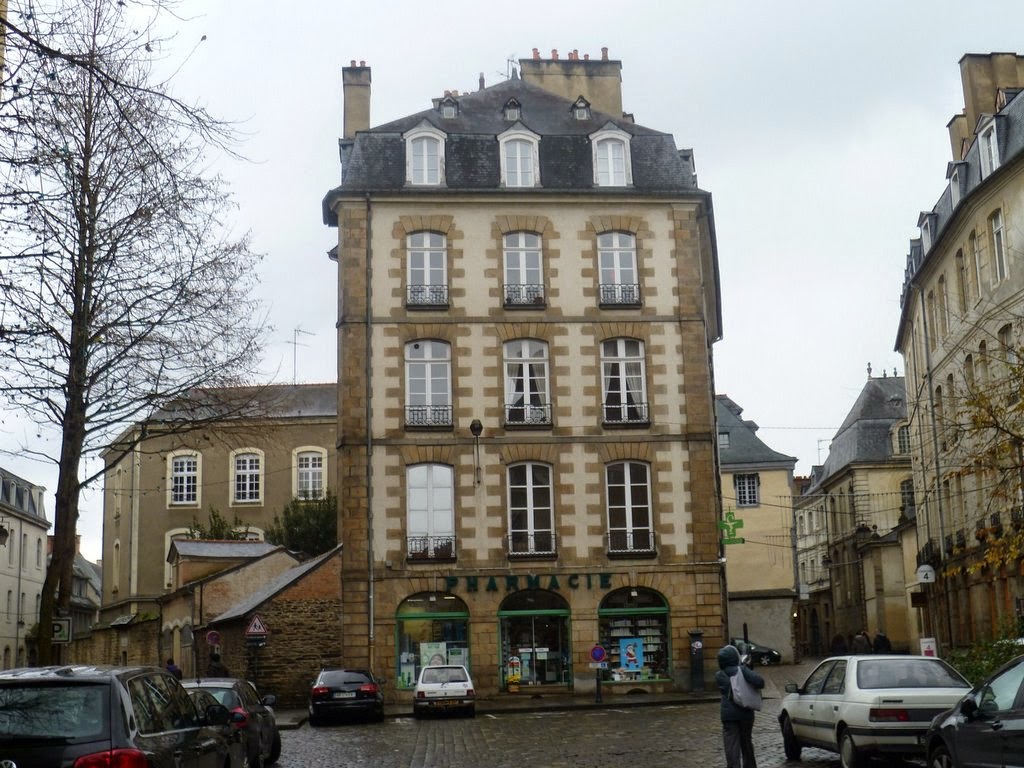Rennes, Departamento Ille y Vilaine, Región
de Bretaña, es una gran ciudad del oeste de Francia a 300 km de París, es la
décima área metropolitana de Francia y una de las ciudades más dinámicas por su
economía local y regional. Juega un papel central en el Arco Atlántico, una de
las grandes regiones transnacionales reconocidas por la Comisión Europea.
Rennes surge entre los siglos II y I antes de Cristo como capital de la tribu
gala de los Redones. Tras la conquista romana se consolida durante el siglo
I. Hacia el siglo III Rennes disminuye
su población, por lo que el recinto amurallado histórico con origen en esa
época se reduce a 8 hectáreas en el centro del actual casco urbano. Estas
murallas evolucionan durante el paso del mundo romano al medieval, dando
continuidad a la ciudad. A lo largo de la Edad Media la ciudad se consolidad y
crece, por lo que es necesario construir un nuevo recinto amurallado más
grande, fuera del recinto histórico romano, para proteger los diversos barrios
que han surgido y también para evitar saqueos de las Grandes Compañías
(soldados mercenarios) que asolaban la región en tiempo de paz. Estas Compañías
surgen en el contexto de la Guerra de los Cien Años, y eran mercenarios que
cambiaban fácilmente de bando, y que asolaban las comarcas por donde pasaban
cuando no tenían contrato. Tras la anexión del Ducado de Bretaña al Reino de
Francia, Rennes se convierte en capital provincial y acoge el Parlamento de
Bretaña. El gran incendio que sufre la ciudad en 1720 arrasa parta de la
arquitectura medieval, aunque todavía quedan barrios y edificios de aquella
época. Luis XV y sus arquitectos rediseñan la ciudad moderna en piedra y le
dejan como patrimonio un gran número de edificios históricos. La llegada del ferrocarril
en el siglo XIX y la industrialización posterior a la Segunda Guerra Mundial
convierten a Rennes en una de las ciudades líderes en crecimiento, y a su
región en cabeza del Arco Atlántico. Rennes es la octava ciudad universitaria
de Francia con 63.000 estudiantes. Rennes cuenta con la primera tecnópolis
europea donde prolifera la investigación tecnológica en telecomunicaciones.
Aquí nació Minitel, que desde 1982 a 2012 ha proporcionado a Francia servicios
paralelos y muy similares a internet, y que se extendió por otros países europeos
y americanos. Finalmente internet ha hecho innecesario el uso de Minitel, pero
los franceses dispusieron de estos servicios 15 años antes que el resto de
europeos. Rennes cuenta con 90 edificios clasificados como monumentos
históricos. Rennes dispone de Aeropuerto, línea de Alta Velocidad y Metro.
Rennes, Ille-et-Vilaine Department, Region of
Brittany, is a major city in western France 300 km from Paris, is the
tenth metropolitan area of France and one of the most dynamic cities on local
and regional economy. The city plays a central role in the Atlantic Arc, one of
the major transnational regions recognized by the European Commission. Rennes
arises between the second and first centuries BC as the capital of the Gallic
tribe of Redones. After the Roman conquest the city was consolidated during the
first century. By the third century Rennes population decreases, so the
historic walled area originating from that time is reduced to 8 hectares in the
center of the present village. These walls evolve during the passage of the
medieval Roman world, continuing the life of the city. Throughout the Middle
Ages the city consolidate and grow, so it is necessary to build a new larger
city walls, outside the Roman historic site, to protect the diverse
neighborhoods that have arisen and to prevent looting of Great Companies
(mercenaries) that ravaged the region in peacetime. These companies arising in
the context of the Hundred Years' War, and were mercenaries easily changed
sides, and ravaged the counties through which they passed when they had no
contract. After the annexation of the Duchy of Brittany to the Kingdom of
France, Rennes becomes provincial capital and home to the Parliament of
Brittany. The Great Fire suffered by the city in 1720 sweeps split of medieval
architecture, although there are still neighborhoods and buildings of that era.
Louis XV and his architects redesigned the modern city of stone and leave numerous
historic buildings. The arrival of the railway in the nineteenth century and
the subsequent industrialization after WWII Rennes make one of the leading
cities growing and it is head region of the Atlantic Arc. Rennes is the eighth University
City in France with 63,000 students. Rennes has Europe's first techno polis
where takes places rampant technological research in telecommunications.
Minitel was born here, which from 1982 to 2012 provided to France parallel and
very similar to internet services, and it extended by other European and
American countries. Finally internet has made it unnecessary to use Minitel,
but the French disposed of these services 15 years before the rest of Europe.
Rennes has 90 buildings classified as historical monuments. Rennes has airport,
High Speed Railway and Metro.

































